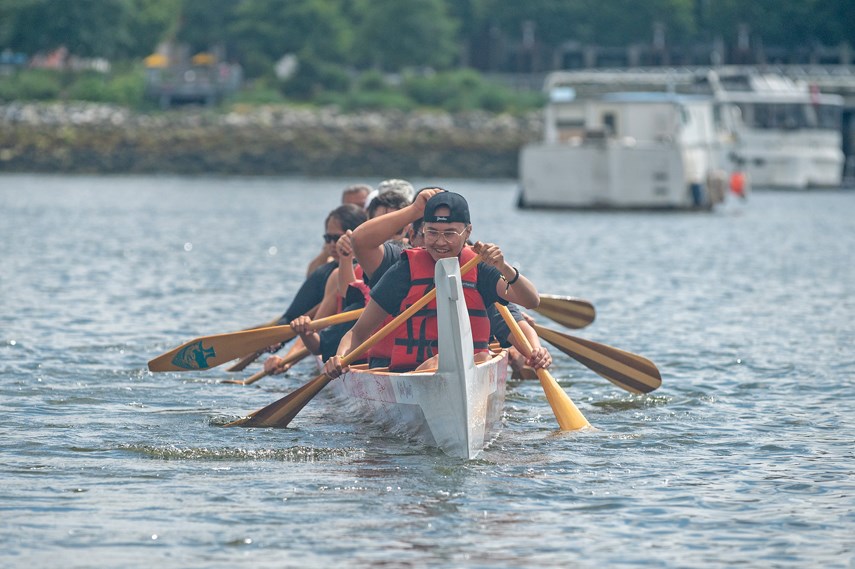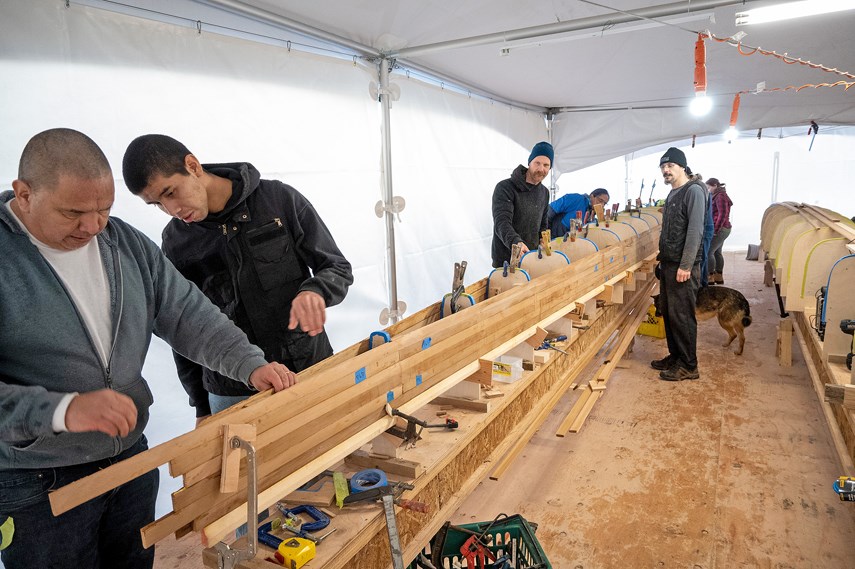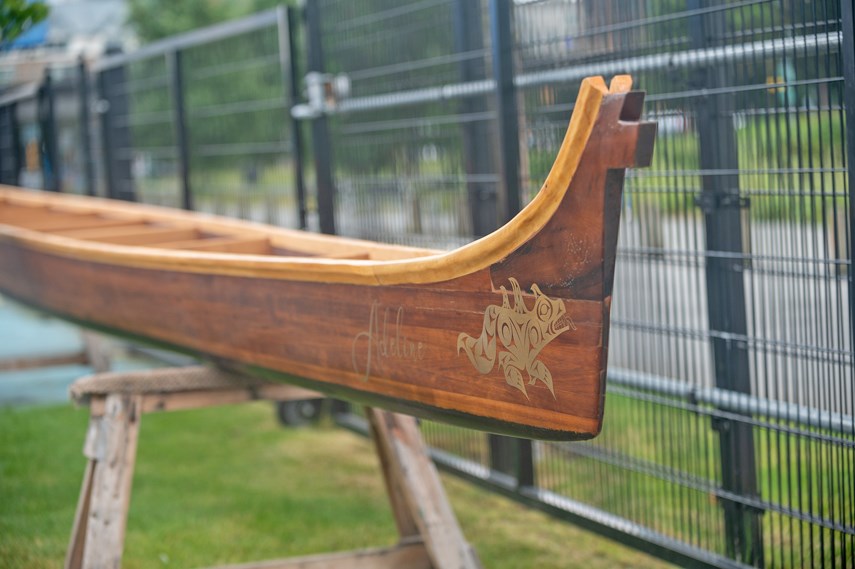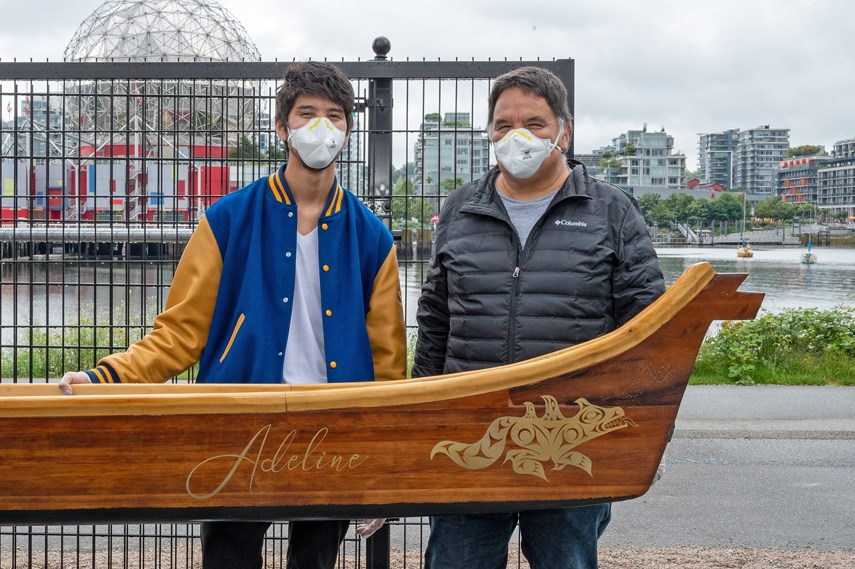Even when his people’s cultural gatherings were banned, they still found a way to meet on the water.
Earlier this month, members of the Squamish and Musqueam Nations, including seventh-generation Squamish carver Mike Billy Sr., celebrated the launch of three new canoes that will be used in the traditional war canoe circuit.
Billy was one of the project leaders for the Canoe Cultures program that developed the traditional watercraft.
Over several months, participants in the program, which was funded through government grants and supported through the Western Canada Community Projects Society and developer Concord Pacific, learned about the traditional process of canoe carving.
A 70-year-old dugout canoe was refurbished and will be given back to Musqueam Nation, while two brand-new cedar strip canoes were constructed for Squamish Nation canoe clubs and pulling crews, according to Billy.
“It was great. There was a lot of people. We got the Musqueam canoe in the water,” said Billy, referring to the launch event held in Vancouver on July 9, which included a brief maiden voyage around False Creek for the dugout canoe.

One of the cedar strip canoes has been collected by members of the Upper Squamish band, while the second one is being delivered to the North Vancouver Canoe Club – a Squamish Nation paddling team.
“Coast Salish have a race program that’s gone on probably since the beginning of time,” mused Billy. “The speed of the canoe is pretty important.”
War canoe races likely evolved out of thousands of years of Indigenous culture whereby Nations and bands would compete for the best fishing spots, with the races eventually developing into a sport hundreds of years ago.
When early European settlers and colonists banned all Indigenous cultural gatherings, such as potlatches and other important events, First Nations likely took to the waters during their war canoe races – which weren’t banned on the technicality that they were considered a sport – to meet up with each other, according to Billy.
“The practice of potlaches were outlawed and we weren’t allowed to be with each other since the 1880s right up until the 1950s,” said Billy. “Racing was considered a sport. It was a loophole. I’m thinking our people probably used it as an excuse to get together.”
The act of getting together to carve and paddle is something Billy and his family have been doing his entire life.
“It was just second nature,” he said.

Diving into the intricacies of canoe carving, Billy explains that the best way to build a strip canoe is to take a mould or frame from an existing vessel and use that as the exoskeleton for a new project.
In the case of the two new cedar strips built through the Canoe Cultures program, participants used the “ribs” of a previously completed canoe called Melanie that was built in 1987, he said.
“We reproduced the shape of Melanie. If you’re going to build a canoe there’s a lot of factors that will play into how fast it is or how it controls. If you want to make sure you’re going to build a fast canoe, you build off something that’s proven,” he said.
The local war canoe circuit in its current form generally includes 12 to 15 races that go from May to August, with participating First Nations coming from all over the Lower Mainland, Vancouver Island and Washington State, said Billy.

It’s these kinds of races that Billy’s son, Mike Billy Jr., has for years participated in as a member of the North Vancouver Canoe Club.
Billy Jr., who just wrapped up his first year at the University of British Columbia, plans to take an upcoming year off in order to devote himself even further to the practice of carving and paddling.
He described the recently completed water vessel that the First Nation will be using as a “dream canoe.”
“I think it’s important because it symbolizes resilience against colonization in the past and colonization today. It’s one part of our culture, one part of us, that’s kind of gone untouched,” said Billy Jr. “That’s the nature of our culture: we find new tools and we use them. It’s always been that way, we adapt and overcome.”



